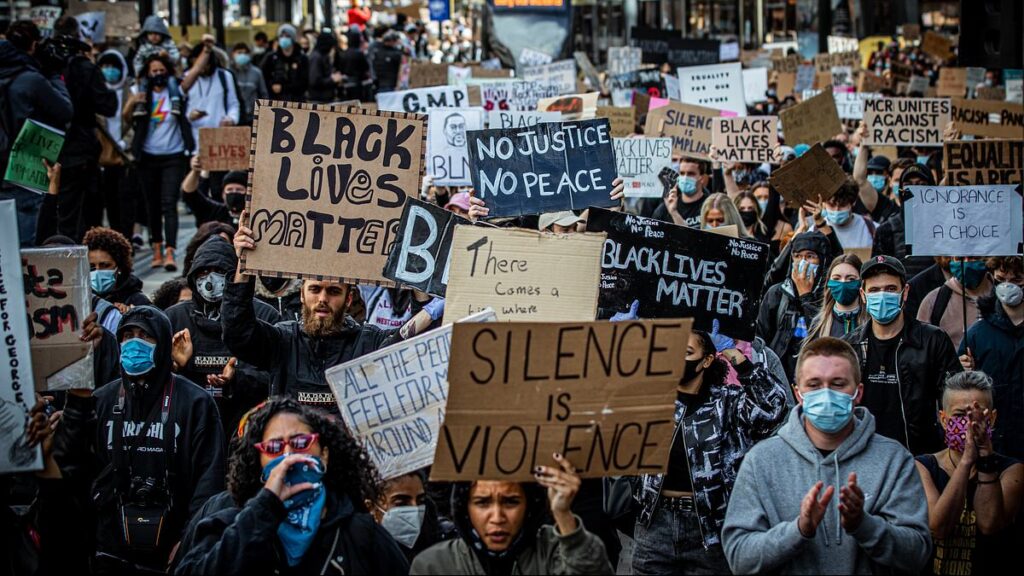How Doomscrolling shaped the path of the future

COVID-19 came, and with it came the reshaping of human habits. We went from constantly checking our phones for entertainment purposes to the endless scrolling for news updates, be it pandemic-related, politics, or any kind of news that would deliver a higher clarity to where the world was going.
November 19, a date will be forever remembered as the day when the world’s dynamic drastically shifted to take a new norm. From then, our days started just how they ended, with us clutching to our phones, scrolling on our favorite social media platform with the hope to get a glimpse of hope to show us that the world is not going to obliviate itself.
While that seems like such a far-fetched scenario, one cannot deny or even disregard the fact that at the time, the global conceptualization of the pandemic shock that hit it left humanity in a state of limbo, living but not living.
And what major factor relied on this? Tech companies, and specifically social media platforms.
From the minute we opened our eyes, our attention was focused on informing and updating our knowledge to get some glimpse of logical clarity through the social media platform. That’s when Facebook, Instagram, Twitter, and other platforms emerged to the scene as a substitute to news outlets to get a much more direct source of information.
And without us knowing, we, as users, gave birth to a new phenomenon, “doomscrolling.”
Sitting at home, in our living rooms or bedroom, with our families or alone, with one companion never leaving our side. Our smartphones.
Doomscrolling is “falling into deep, morbid rabbit holes filled with the coronavirus content, agitating myself to the point of physical discomfort, erasing any hope of a good night’s sleep.”

Typically, everyone has their late-night scroll, where those last 15 to 30 minutes of just laying in bed and scrolling through our favorite social networking platform brings some unconventional relaxing relief before we call it quits for the day. But the only difference between that scroll and doomscrolling is the content recommended for us and the content that feeds our curiosity and triggers some sort of psychological reaction.
The constant observation of the world collapsing around us has left individuals in some state of the uncontrollable void as users endlessly seek news about COVID-19 deaths, unemployment, climate change, racial injustice, and much more.
According to a student studying communication and social media at the University of Michigan’s School of Information, Nicole Ellison thinks. At the same time, these platforms provide endless facts – constantly changing and being updated – in reality, none actually offer a solution to the problem presented through them.
So, where does that leave us? In a state of cognitive processing, trying its very best to provide some sort of analysis to help the user comprehend what is happening.
But that never comes to fruition.
Now, many people are raising questions about the benefit of platforms such as Instagram, Facebook, and Twitter, if they do not provide answers but only raise hypotheses in our minds.
Various studies highlighted that while social media could have some detrimental effects on humans, they also trigger a positive brain response. But one must not forget that these platforms also play a fundamental role in triggering feelings of anxiety and depression.
“In a situation like that, we engage in these more narrow immediate survival-oriented behaviors. We’re in a fight-or-flight mode,” Ellison informed Wired.
“Combine that with the fact that, socially, many of us are not going into work and standing around the coffee maker engaging in collective sense-making, and the result is we don’t have a lot of those social resources available to us in the same way.”
One thing that needs to be taken into consideration, though, and it’s that as humans, we have a much bigger tendency to focus on the negative more than the positive. Meaning, while these platforms showcase in our feed’s bad news, we must not forget that these recommendations are based on an algorithm that learns from the users’ behavior.
The only reason this content is being presented to the users is that they focused their attention on this type of content, triggering recommendations of similar nature.

“Since the 1970s, we know of the ‘mean world syndrome’ – the belief that the world is a more dangerous place to in than it actually is – as a result of long-term exposure to violence-related content on television,” research scientist Mesfin Bekalu said.
“So, doomscrolling can lead to the same-long term effects on mental health unless we mount interventions that address users’ behavior and guide the design of social media platform in ways that improve mental health and well-being,” he added.
While the effect of doomscrolling is primarily dependable on the content presented on the device, it also depends on who is interacting with this content. Due to the overwhelming attachment to devices, each person’s personality affects doomscrolling.
Some have already recognized the issue and just steered back from indulging in such behavior, as they cannot see themselves single-handedly participating in doomscrolling, saying they will not indulge in any activity that would hurt them through a tiny device.

Despite social media helping the world stay connected and building a strong association between people from all around the globe, it has also become means for people to highlight the injustice happening in the world.
From the Black Lives Movement triggered by the tragic murder of George Floyd to the siege on Gaza, people are now informed about what is happening in the world. This societal awakening these platforms deliver comes at the expense of users’ mental health, which can be very draining.
The compulsion began with the overtake of the pandemic and magnified in recent months, as humanity tried to find a coping mechanism in a time where the already existing ones had been stripped away from being confined in a closed space.
Knowledge is bliss, valid. But what if this knowledge is one of the primary triggers dooming our mental state? Being informed can slave people, spark mental health issues the person is not ready to deal with or does not even know they are suffering somehow. The overwhelm of tragedy can quickly take over someone, and it does not serve a purpose. The past two years were challenging, but to prevent mental burnout, they must be aware of what is causing the problem.
And, here comes the responsibility of social media platforms in controlling, or more like reforming the kind of content they deliver to their users. One thing is clear, tech companies related to social networking will not structure the right reforms to themselves, so, regulatory approaches are well-needed.
Inside Telecom provides you with an extensive list of content covering all aspects of the tech industry. Keep an eye on our Ethical Tech section to stay informed and up-to-date with our daily articles.
